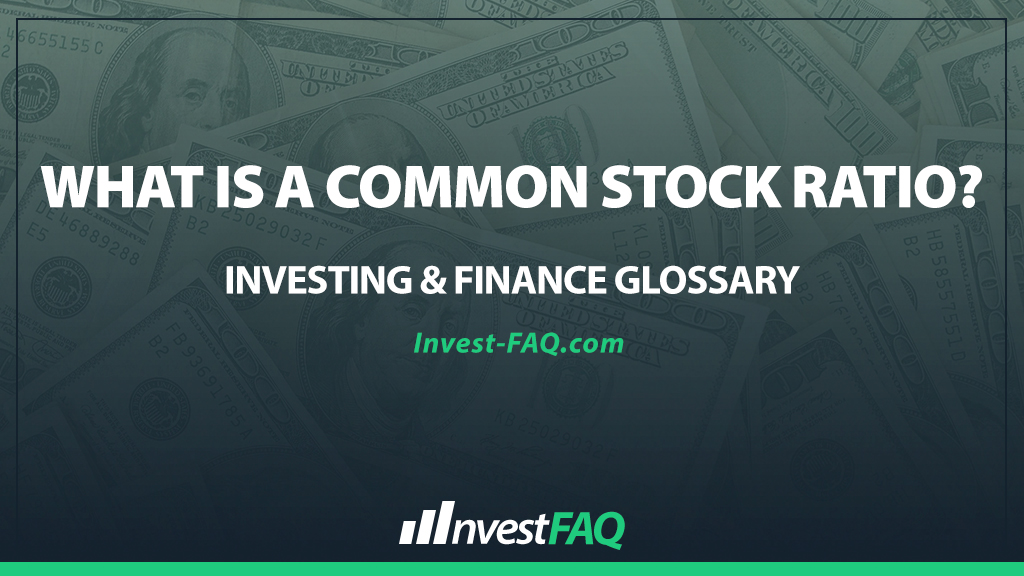
Common Stock Ratio
Contents
A common stock ratio, often referred to as the equity ratio, is a financial metric that measures the proportion of a company’s total equity financed by common stockholders relative to total assets. It is calculated by dividing common stock equity by total assets. This ratio indicates the extent to which a company is financed by equity capital, providing insights into its capital structure and financial leverage.
Businesses utilize the common stock ratio to assess their financial stability and risk profile.
A higher common stock ratio suggests a company is primarily financed through equity rather than debt, implying a lower risk of insolvency since equity does not require mandatory repayments.
Investors and creditors use this ratio to gauge the financial health of a company, its reliance on equity financing, and the potential for future returns.
Example of a Common Stock Ratio
“Green Innovations Ltd.” has the following figures reported in its balance sheet:
Total Equity: $500,000
Of which Common Stock Equity: $300,000
Total Assets: $800,000
The common stock ratio can be calculated as:
Common Stock Ratio = Common Stock Equity / Total Assets
Common Stock Ratio = $300,000 / $800,000
Common Stock Ratio = 0.375 or 37.5%
In this example, “Green Innovations Ltd.” has a common stock ratio of 37.5%, indicating that common stockholders’ equity constitutes 37.5% of the total assets.
This figure helps stakeholders understand that a significant portion of the company’s assets is financed through equity, suggesting a relatively conservative capital structure with potentially lower financial risk.
However, it also may indicate less leverage, which could mean the company is not fully exploiting potential tax benefits associated with debt financing or pursuing aggressive growth strategies through borrowed capital.
Significance for Investing & Finance
The common stock ratio holds significant importance for several reasons:
Financial Stability Insight: It provides a quick snapshot of a company’s financial leverage and stability, indicating how much of the company’s operations are supported by equity versus debt.
Investor Perspective: From an investor’s viewpoint, a higher common stock ratio may be preferable, as it signifies less financial risk and potentially higher resilience in economic downturns.
Strategic Financial Planning: For management, understanding the company’s common stock ratio is essential for making informed decisions about future financing, whether to issue more equity, take on debt, or repurchase shares.
Benchmarking: Companies can use the common stock ratio to benchmark against peers in the industry, assessing whether their capital structure aligns with or diverges from sector norms and competitive practices.
In summary, the common stock ratio is a crucial metric in financial analysis, offering insights into a company’s capital structure, risk profile, and financial strategy.
By evaluating the proportion of assets financed by common stock equity, stakeholders can assess the company’s financial health, stability, and strategic positioning in terms of its financing decisions.
FAQ
What does a high common stock ratio indicate about a company’s financial health?
A high common stock ratio suggests that a significant portion of a company’s assets is financed through shareholders’ equity, implying a conservative capital structure with potentially lower financial risk.
How can the common stock ratio affect a company’s borrowing capacity?
A higher common stock ratio might indicate less reliance on debt financing, potentially enhancing a company’s borrowing capacity by showing lenders a strong equity base.
Is a higher or lower common stock ratio preferred from an investor’s perspective?
Investors often prefer a higher common stock ratio as it indicates lower financial risk due to reduced leverage and a stronger equity position, which can be favorable during economic downturns.
Can the common stock ratio influence a company’s dividend policy?
Yes, a company with a higher common stock ratio may have more flexibility in its dividend policy, as a strong equity base can support more consistent or higher dividend payouts.
